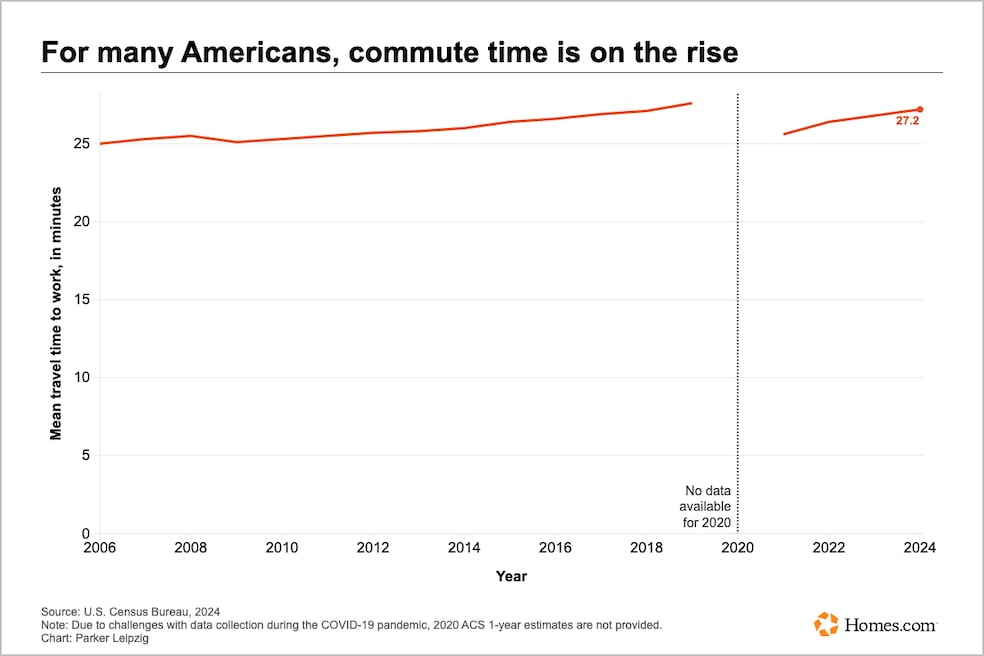After a pandemic-era gap that shrank — or eliminated — journeys to and from the office for many U.S. residents, commute times are on the rise as buyers grapple with housing costs and hybrid work arrangements.
Last year, American workers aged 16 or older who didn't work from home spent an average of 27.2 minutes traveling to work, according to the Census Bureau’s latest American Community Survey. That 2024 figure was up from the 26.8-minute average of the previous year and nearly a full return to the 27.6 minutes averaged before the onset of the COVID-19 pandemic in 2020.
In addition to questions about computer and internet use, housing costs, age and origin, the Census Bureau says it asks Americans about how they get to and from work for crucial data that informs infrastructure planning and public services. But for people in the housing market, commute times are just one more data point a buyer takes into consideration before making the leap.
The percentage of workers traveling an hour or more to work also returned to nearly pre-pandemic levels, growing from 8.9% in 2023 to 9.3% in 2024, just shy of the 9.8% high reached before 2020. The percentage of workers driving alone to work remained flat at 69.2%, but the figure was still below the 75.9% of workers who drove alone in 2019. Workers taking public transportation stayed below 2019’s 5%, clocking in at 3.7% in 2024.
Even as commute times neared their pre-pandemic figures, the number of U.S. employees who reported working from home stayed well above the almost 6% measured in 2019. Last year, 13.3% of respondents said they worked from home. Still, that 13.3% represented a steady downward trend in work-from-home habits — since a 17.9% apex in 2021, the percentage fell to 15.2% in 2022 and 13.8% in 2023.
These lengthening commute times could be indicative of shifts in post-pandemic homebuyers, according to reference materials from the National Association of Realtors.
“Homebuyer preferences have changed significantly since the pandemic began,” the trade group's website stated. “The shift to remote or hybrid [work] means that buyers are more willing to live further from the office. With home prices rising, buyers also prefer the greater affordability of more distant locations.”
Many Americans are still enjoying the teleworking trends that shot up in 2020. In 2024, the rate of teleworking increased, while the number of hours teleworked decreased, according to the Bureau of Labor Statistics. The trend continued into 2025, with 51% of U.S. employees having a hybrid work schedule, according to a May Gallup poll. That was down from 2024, but still more than the 18% in 2020. Exclusively on-site workers remained fairly flat at 21%, while the percentage of fully remote workers increased to 28%.
At the same time, high housing costs in employment centers across the country may be contributing to those lengthy commutes. According to a study from researchers at the University of California, Los Angeles, Luskin School of Public Affairs in 2022 — a year when Americans reported spending 26.4 minutes on average getting to work — low-wage workers often had a shorter commute to work. The rub, however, came alongside a dearth of affordable housing.

